The artist who turned his dead cat into a drone is building a helicopter out of a cow
It all started in 2012, when his cat Orville got hit by a car.

Jansen decided it would be a shame to simply bury his late feline friend, so he drew inspiration from his pet's namesake — Orville Wright, one of the Wright Brothers, the inventors of heavier-than-air flight. Jansen gutted Orville, preserved him, and turned him into a custom quadcopter.
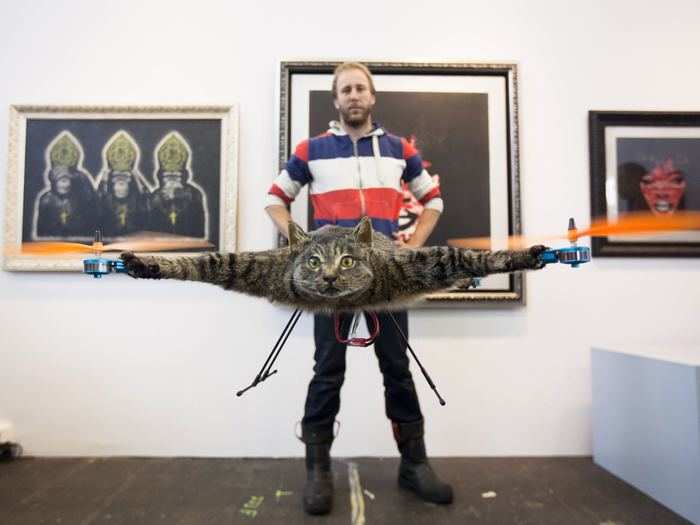
The response was huge. Jansen had recruited the help of technical engineer Arjen Beltman to design and help fly his "half-cat, half-machine creation," and it was covered everywhere from Mail Online to Forbes.
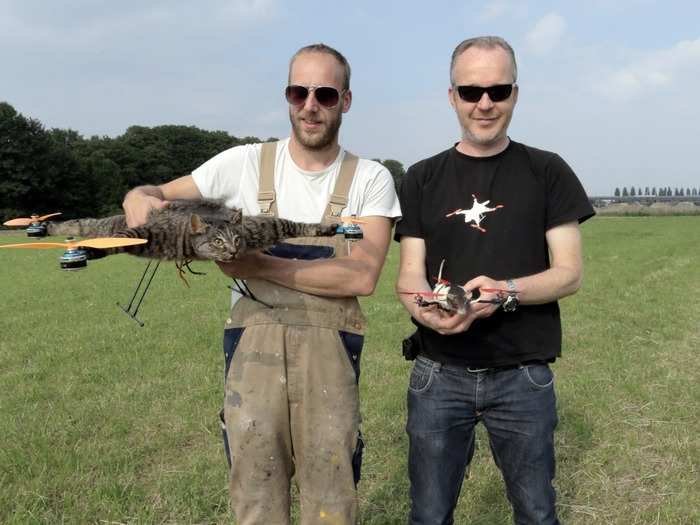
According to the Los Angeles Times, the unconventional drone caused "global outrage" after footage of it went viral. The "Orvillecopter," as Jansen calls it, was subsequently exhibited as the Kunstrai art festival in Amsterdam.

After that success, Jansen got more ambitious. In 2013, his next project was again using a taxidermy animal as its base — but a far larger one. Jansen asked around local farms for a suitable animal, and one eventually got back to him with news of a recently deceased candidate: an ostrich.
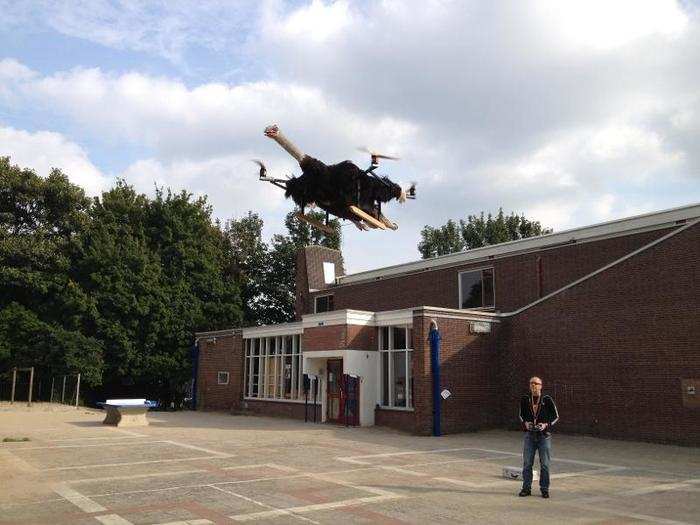
Arjen Beltman again offered his services as engineer and pilot — "Without Arjen there are no flying animals," Jansen told me. "I build the puppet. He does all the electronics." RC Technics also gave financial support to the project, according to a Wired interview Jansen gave at the time.

Getting the shape done was the most difficult part," Jansen told Wired. "I looked at hundreds of pictures of live ostriches, dead ones, skinned ones to try and figure out what its body looked like. I had to then fit the skin around it and found that in some places I had too much foam and in others not enough. The skin then got a bit mildewy and I had to take it back to the taxidermist to treat it.
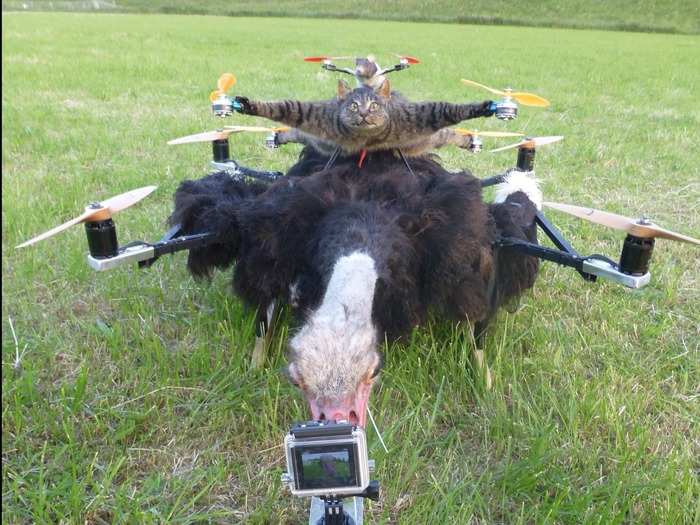
Beltman was at it again with a solo project in 2014, giving a schoolboy's dead rat the Orville treatment.
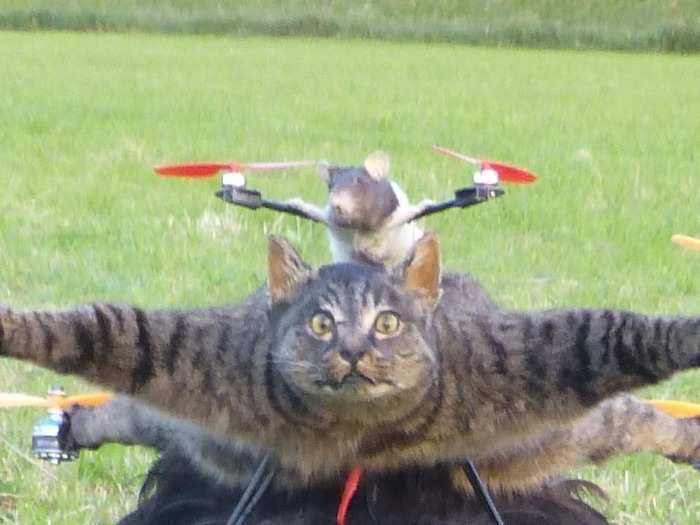
"When I learned he had cancer and the vet had to put him to sleep I was very upset," 13-year-old Pepeijn Bruins said of his pet, "Ratjetoe." "I had seen Bart and Arjen and their flying cat, and I asked my dad if it would be possible to have the rat fly." Beltman was only too happy to oblige, transforming the deceased rodent into a remote-controlled flying machine.

Jansen had another project in 2014 that saw less media attention than the others but was no less impressive. He calls it the "sharkjet," and it's exactly what it sounds like.
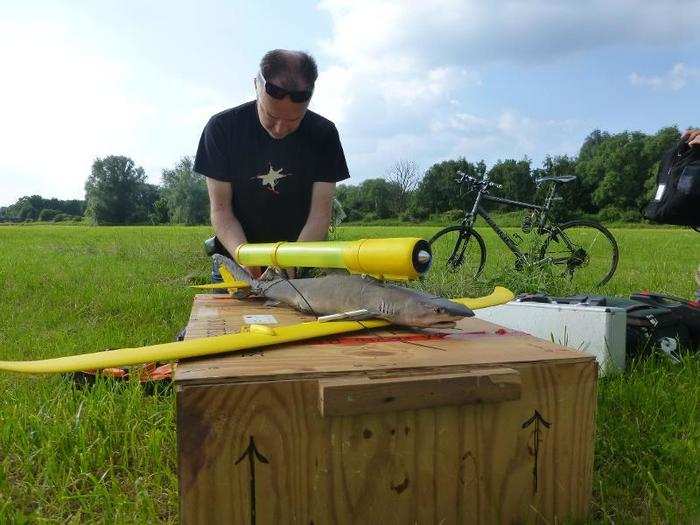
Jansen managed to get his hands on a juvenile white tip reef shark, which died of a bacterial infection, from a local aquarium, and the enterprising Dutchman strapped wings and a jet engine to the animal before sending it soaring through the air.
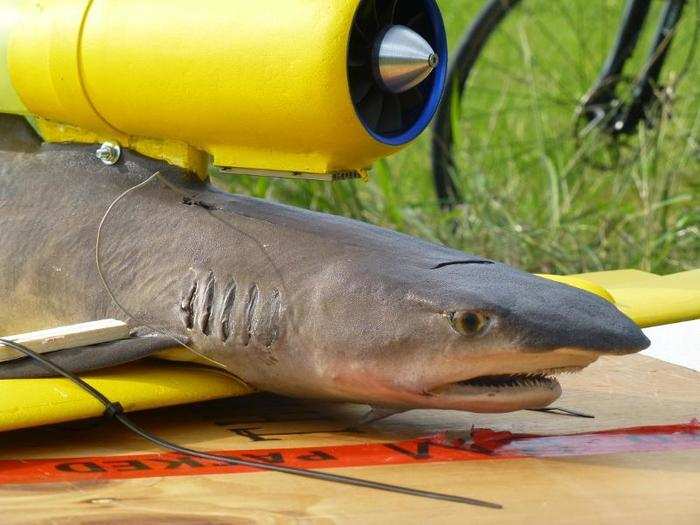
Here's a video of it in action:

When a friend offered him a dead badger, he immediately accepted and soon settled on a use for it: a submarine. The project is called "Das Boot," a play on the famous German U-boat film "Das Boot," as well as the Dutch word for "badger" — "das."
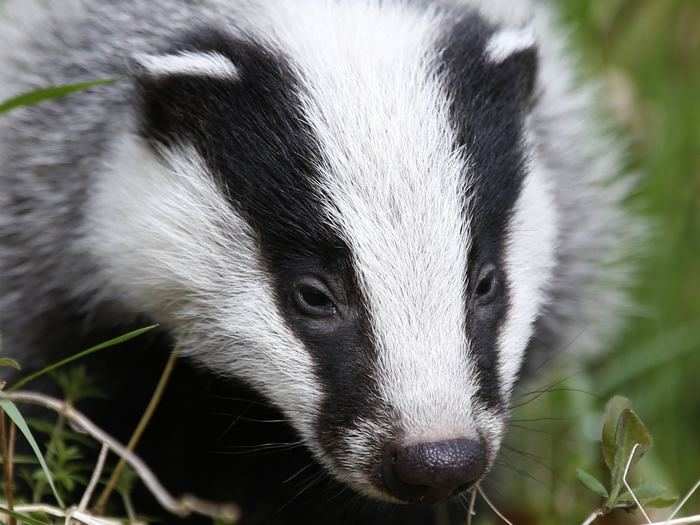
Note: Bart Jansen's badger not pictured.
The project ran into some difficulties, however. Jansen struggled to find a lab willing to "plastinate" the badger skin — a preserving method that could be used to waterproof it.
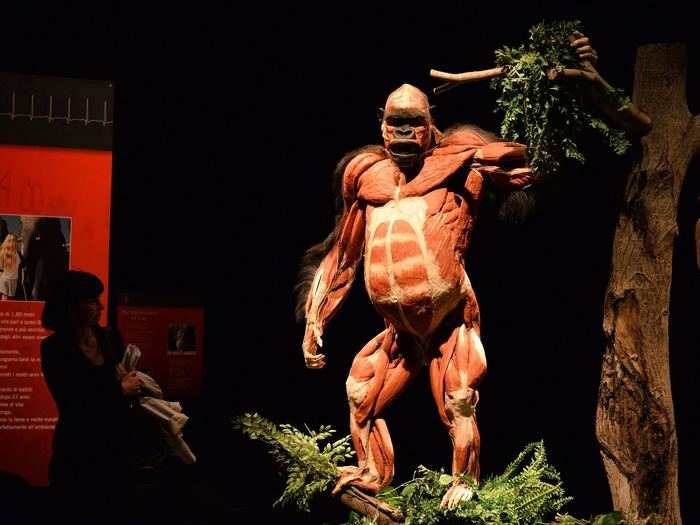
Plastination is the technique invented by anatomist Gunther von Hagens and famously shown off at the "Body Worlds" exhibition. This is a gorilla preserved using the method.
The skinned badger carcass has been sitting in his freezer for months.
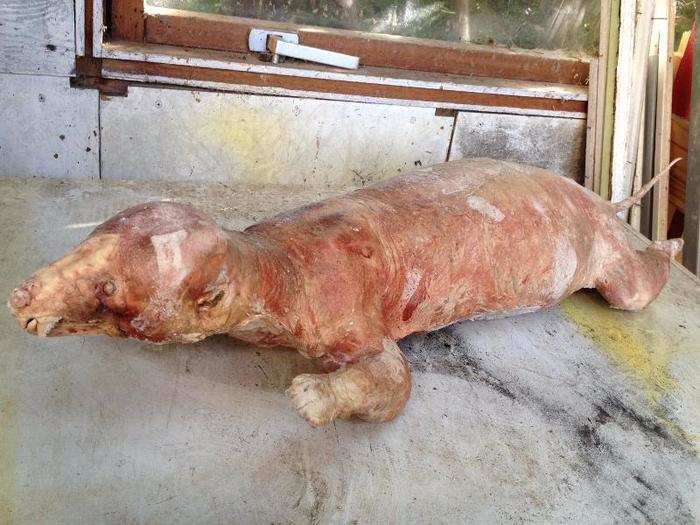
This carcass has been used to build a mould for the engine, and Jansen is now considering forgoing plastination altogether, due to fears about shrinkage.
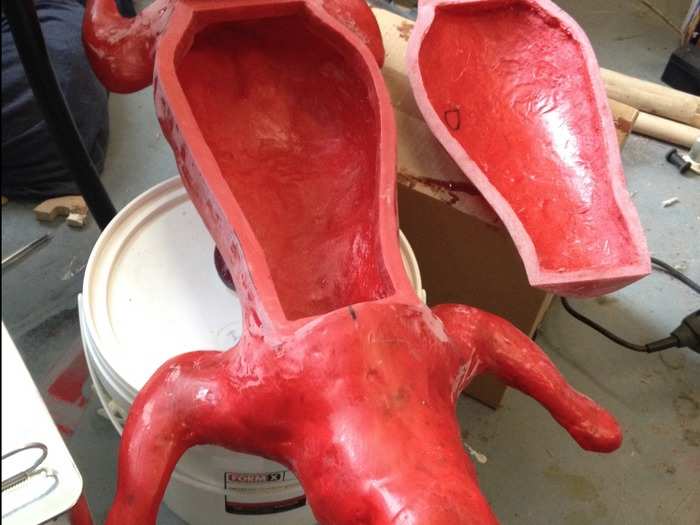
For this engine, Jansen and Beltman are building a jet-propulsion system. "The propeller sucks up the water through a grid in the belly of the badger, and excretes it with force through the back end, which is a servo-controlled pipe that can direct the jet stream left and right, up and down," Jansen tells me.
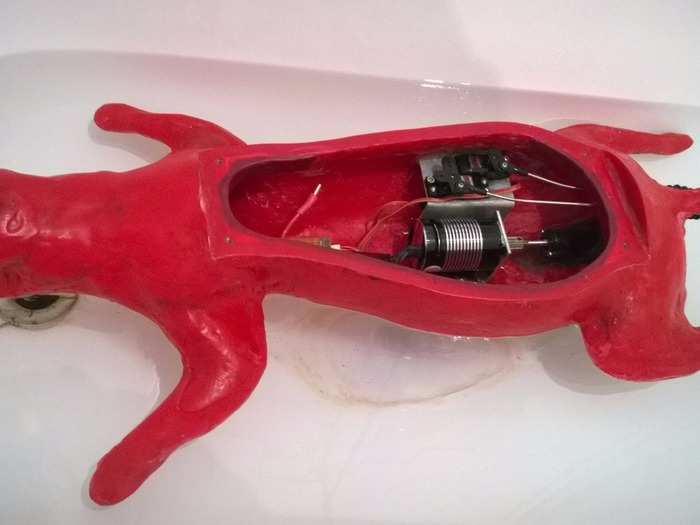
Because badgers are a protected species in the Netherlands, trying to develop a badger-skinned submarine is a more complex procedure than you might expect. You need to register at the police station, and authorities need to make sure that the badger wasn't killed deliberately, which would be an offence. Jansen won't be able to tour with the finished product either, as restrictions mean he'll be unlikely to be able to export it.
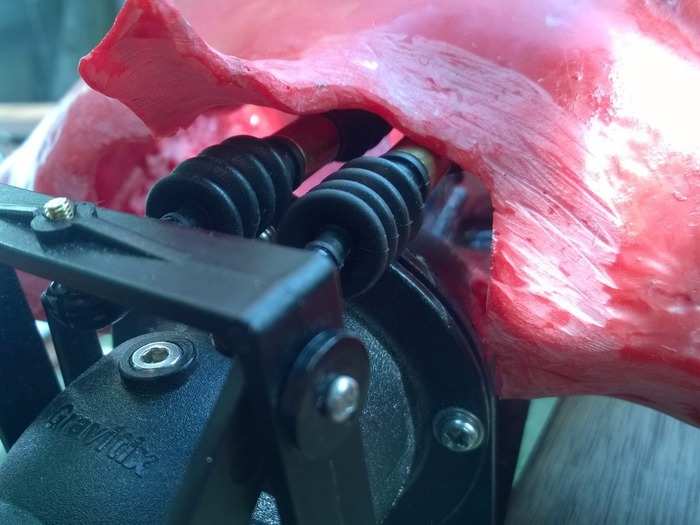
Here's a first test of "Das Boot" in action. The duo have finally figured out a way to waterproof the skin, Jansen recently told me, and it will be finished "in a while."

Jansen views his projects as art. He and Beltman are trying to "invent a first machine for everything," he told me in January. "My work highlights situations that show the skewed balance between what we want to achieve and what we actually achieve, when pursuing that goal," his website explains.
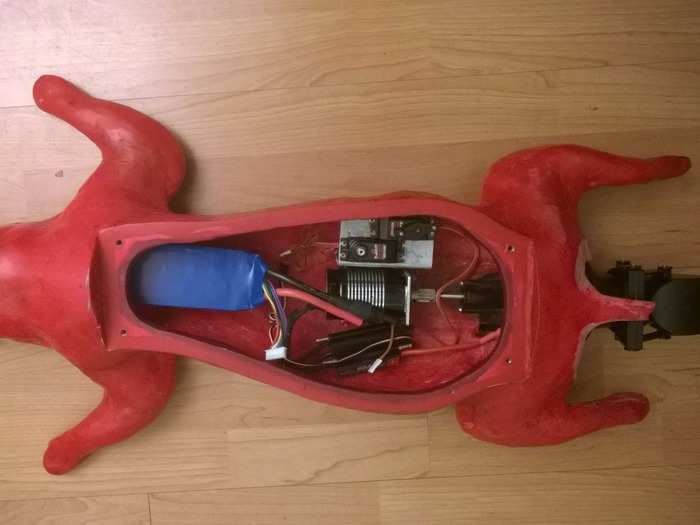
Here's another test, from October 2016, of "Das Boot" on open water:

Jansen doesn't just work with *real* dead animals. Here's one of his installation pieces, focusing on children's character Big Bird.
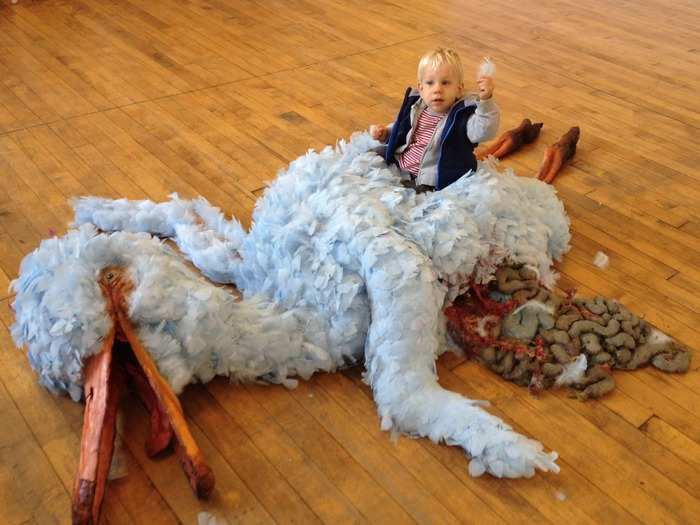
In 2007, the Netherlands was debating the burka, a garment worn by Islamic women. "It was this blown-up thing, for there were about 20 people in the whole bloody country wearing them," he says — so he decided to make a potentially inflammatory response.

On the whole political mishmash about it I decided to reinvent the Burka for all kinds of occasions. So that prohibition would not be necessary any longer.
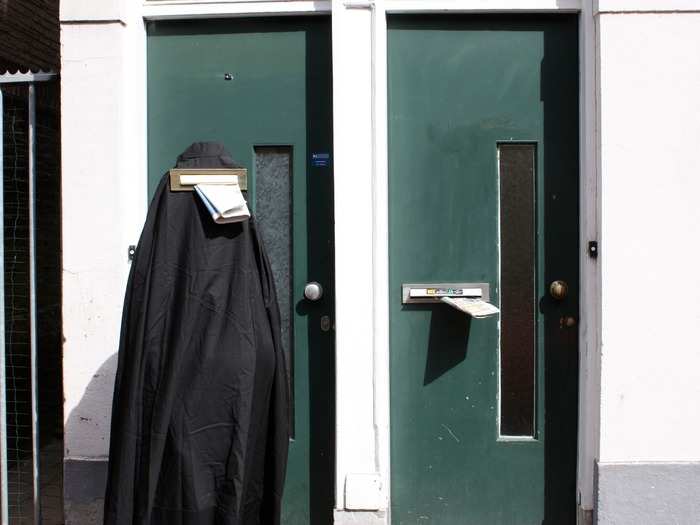
Burka for everyone so to speak. There are a couple more, one with a bold clowns head and a twin burka … for twins, or two girls, or two boys even. Hand in hand under the hood … everybody happy.
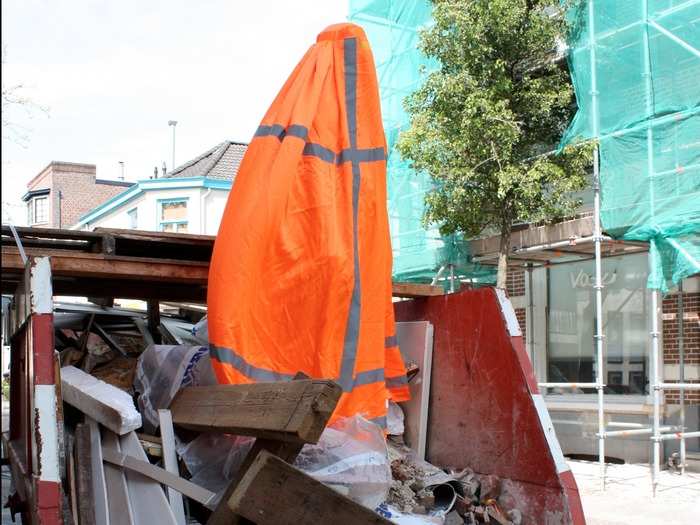
Here's another of his artworks — "The Last Dishes." He collaborated with Lars Reinboud on it, and it won the Summer Expo public prize at Gemeente Museum Den Haag in The Hague.
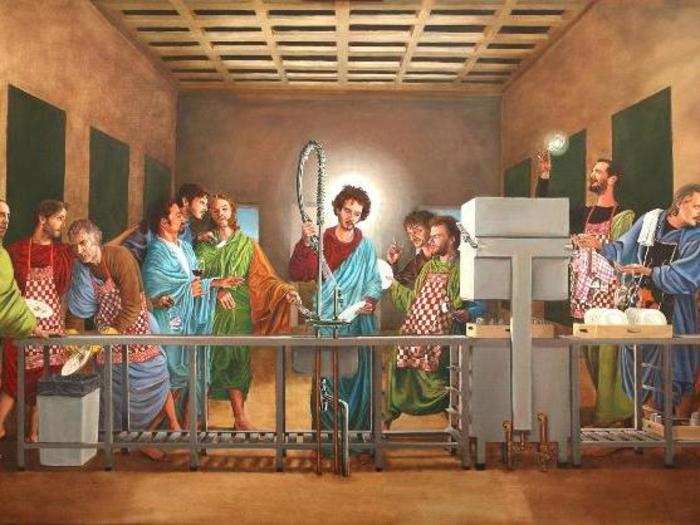
Here's a recent video of Jansen's called "Pussy Destructor":

Jansen and Beltman have a new project: A "mancopter." He explains: "We’re still deciding on which shape our mancopter will have. Trying to build a flying motorcycle was one of the ideas, but that one is already been thought of by a different group of inventors. So we figured it be better to stick with what we know and build a one-person multicopter in the shape of an animal," he told me in September 2015. What animal?
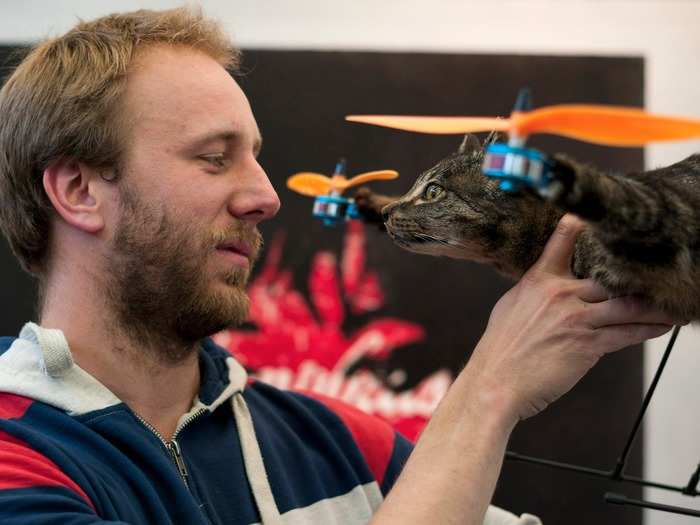
A cow could fit a person. So a cow is one of the options. That means we’d be using a cow indeed. Or any other animal we can lay our hands on that fits a person, but again, it’s in a very early state of development, all still in our minds.
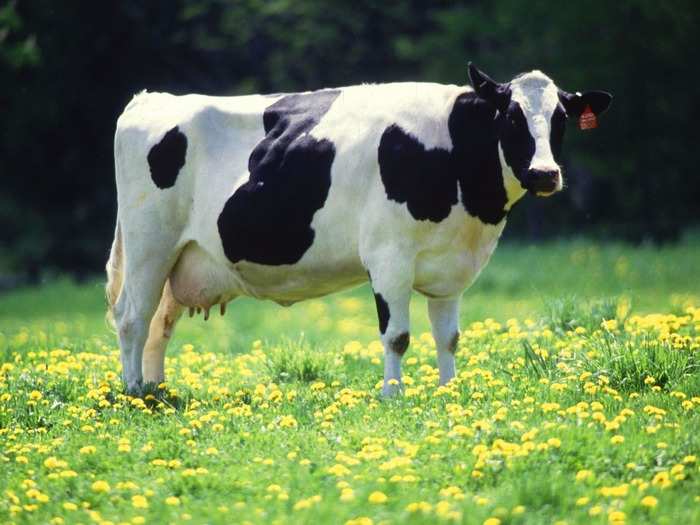
Once Das Boot is finished, Jansen and Beltman will start on the "Bovine Personnel Carrier," or BPC, as they're now calling it, Jansen told me in April 2016.
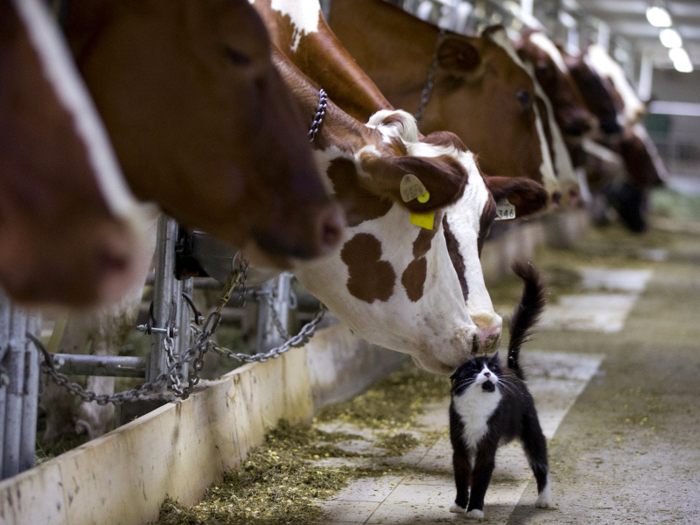
There has been huge media attention, but it has yet to translate into a commercial success story. A €100,000 offer for the Orvillecopter in 2012 never materialised. He told Business Insider he would be "happy to sell" the projects, but no one wants to buy them.
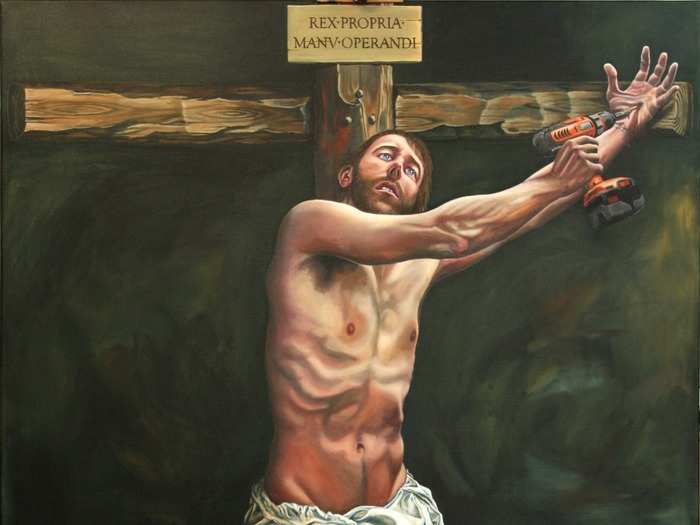
Another of Jansen's paintings.
We do TV shows, live shows and performances, that pay for the new projects," Jansen told me. He has also previously discussed selling merchandise for extra revenue. "People may not buy the Orvillecopter, but they might like a fridge magnet of it ...
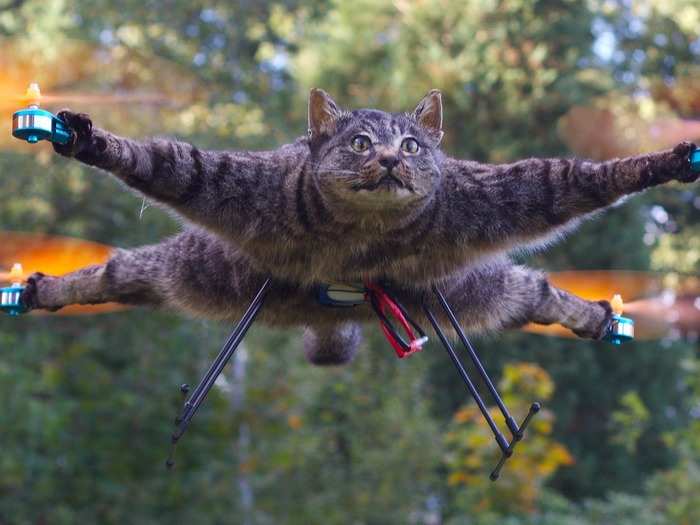
Popular Right Now
Popular Keywords
- India’s wearables market decline
- Vivo V40 Pro vs OnePlus 12R
- Nothing Phone (2a) Plus vs OnePlus Nord 4
- Upcoming smartphones launching in August
- Nothing Phone (2a) review
- Current Location in Google
- Hide Whatsapp Messages
- Phone is hacked or not
- Whatsapp Deleted Messages
- Download photos from Whatsapp
- Instagram Messages
- How to lock facebook profile
- Android 14
- Unfollowed on Instagram
Advertisement